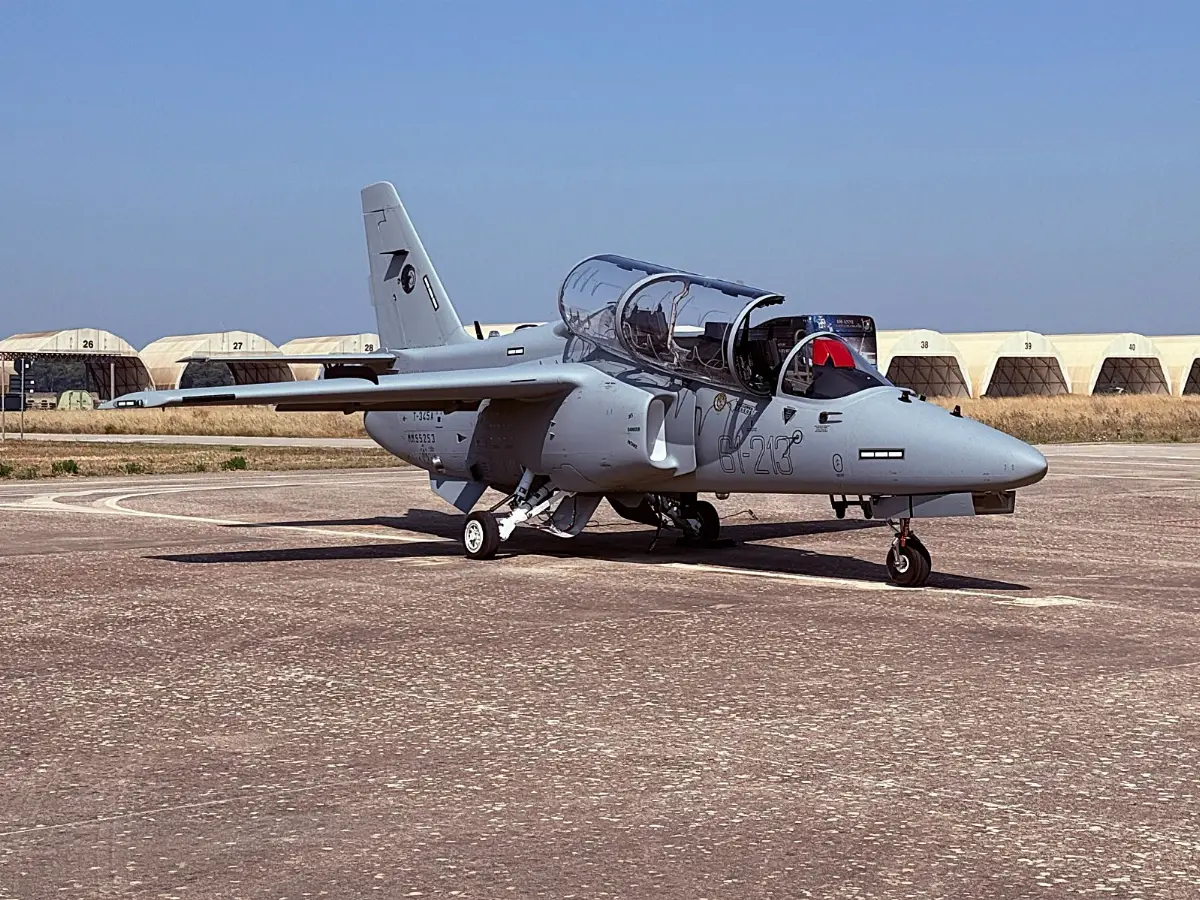
The M-345 aircraft enters service with the Italian Air Force
The new trainer replaces the MB-339 and strengthens Italy's leadership in top gun training

Today, June 12, 2025, marks a pivotal moment for the Italian Air Force with the official introduction of the M-345 (designated T-345A by the Armed Force) into the training fleet for military pilots. Entering service at the 61st Wing in Galatina (Lecce), the aircraft, developed by Leonardo in Lombardy at the Venegono Superiore plant (Varese), strengthens Italy’s leadership in training today’s and tomorrow’s top guns. Together with the M-346, operational at the International Flight Training School (IFTS) in Decimomannu (Cagliari, Sardinia), it covers the entire training syllabus for military pilots, from the initial basic phase to the most advanced phase, known as LIFT (Lead-In to Fighter Training).
The M-345 draws on Leonardo’s consolidated experience in the military trainer sector, built upon the success of aircraft such as the SIAI-Marchetti SF-260, the Aermacchi MB-326, and the Aermacchi MB-339. The latter, in particular, has been in service for nearly 45 years, training Italian and foreign military pilots and painting the skies worldwide with the tricolor of the Italian Aerobatic Team, which will soon adopt the Leonardo M-346 as its new aircraft.
Thanks to the introduction of the M-345 and its integration into the Air Force’s training syllabus—which already includes the M-346 for subsequent training phases—the Italian Air Force will boast the most modern fixed-wing military training system in Europe.
Jet performance with turboprop costs
The M-345 is an innovative jet aircraft offering performance superior to that of a jet with operating costs comparable to those of a high-end turboprop. The model serves as the centerpiece of an integrated training system encompassing both the basic and advanced phases (referred to as Phase II and Phase III) of pilot training. Thanks to its modern avionics and state-of-the-art human-machine interface, the aircraft effectively prepares pilots for the transition to next-generation fighter jets.
Virtual and augmented reality at the pilot’s service
One of the M-345’s distinguishing features is the Embedded Tactical Training System (ETTS), an integrated simulation system that enables the reproduction of complex, multi-domain tactical scenarios during training flights. This system allows pilots to interact with realistic threats and targets, simulated air, maritime, and ground forces generated by computer, onboard sensors, and simulated armaments. This capability enables pilots to train in synthetic environments replicating real operational conditions, enhancing training quality while reducing required flight hours, thereby improving safety, cutting costs, and increasing sustainability.
Two aircraft for a more effective training pathway
The Leonardo M-345 and M-346 enable air forces to offer a training pathway that ensures a seamless transition for pilots across different training phases, reducing time and costs while improving overall program effectiveness. Thanks to the advanced Ground Based Training System (GBTS), i.e., ground-based simulation systems, the same training objectives can be achieved with fewer flight hours.
Advanced Technology and Sustainability
The M-345 is equipped with a Williams FJ44-4M-34 turbofan engine, optimized for military and aerobatic use, delivering high performance with reduced fuel consumption. The aircraft is designed for long operational life, featuring an integrated monitoring system that reduces maintenance costs and downtime while enhancing fleet readiness and efficiency. In line with the standards of new-generation military jets, the M-345’s digital cockpit avionics feature a highly advanced human-machine interface with three color multifunction touch-screen displays (MFDs) and a head-up display (HUD), offering an immersive flight experience and facilitating the transition to next-generation fighters. The cockpit, with excellent external visibility and staggered tandem seating, includes HOTAS (Hands On Throttle-And-Stick) controls, allowing pilots to operate the aircraft without ever removing their hands from the main controls.
AVIONEWS - World Aeronautical Press Agency